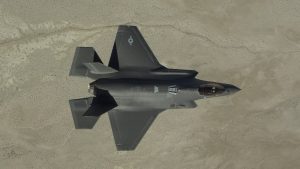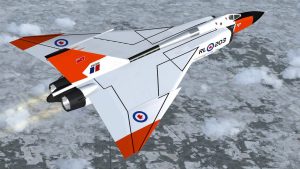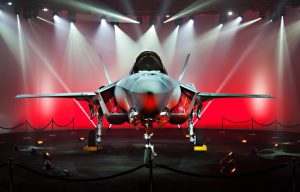| The X-44 Manta never made it past a design concept, but its short life influenced later stealth designs like the F-22 Raptor. |

The X-44 Manta Design Was Ahead of Its Time – The X-44 Manta never made it past a design concept, but its short life influenced later stealth designs that may be taken up by the U. S. NGAD (Next Generation Air Dominance) 6th-generation fighter. The Manta – an acronym for Multi-Axis No Tail Aircraft – was a delta-shaped stealth fighter that had no recognizable tail section. This design specialized in low observability flight – perhaps even more stealthy than the fighter that emerged from this process – the F-22.
The X-44 goes back to 1999. Lockheed Martin was behind the design of the X-44 and Lockheed later partnered with NASA for its development. This was a single-pilot air superiority fighter that would have been 62-feet long. One of the main ideas behind the X-44 was thrust vector control which would grant it the kind of maneuverability that would overwhelm enemy fighter planes. Thrust vectoring means an airplane can change the angle of thrust to control altitude in an advantageous manner. This allows the airplane to change directions in a more aggressive manner.
The X-44 was considered a testbed to see how an airplane without tailplanes would perform. This meant the airplane had what Military Factory described as a “stretched delta-wing mainplane” with side-by-side turbofan engines – namely Pratt & Whitneys with 35,000 pounds of thrust. It was estimated that the airplane could achieve speeds of up to 1,500 miles per hour with a 49,000-foot ceiling.
The design would result in lower drag and more efficiency with better stealth capabilities, including internal weapons bays. The potential for a full payload of ordnance was impressive with a diverse load of Sidewinders, AMRAAMs (advanced-medium range air-to-air missiles), precision-guide bombs, and a 20mm internal cannon. The overall configuration would have allowed the X-44 to carry more fuel to extend range.
As Alex Hollings wrote on Sandboxx, “If the X-44 Manta could have offered similar performance to the F-22 while also being even harder to detect, it may have been enough to push this aircraft concept off of Lockheed’s notebook pages and into their production facilities. But it wasn’t just stealth the X-44 did better. It also carried a whole lot more hate,” he said.
If the X-44 would have been stealthier than the F-22, it stands to reason that it was the impetus behind the NGAD program. The NGAD will likely have the wedge-shaped, tailless design of the X-44. No-tail aircraft, a design the NGAD will likely take on, creates a lower radar signature.
The Air Force has reportedly built a prototype of the NGAD and taken it on a test flight. The Navy has its own NGAD program – a 6th-generation fighter to replace the F/A-18E/F Super Hornet called F/A-XX. Funding for this project has been allocated in the latest Pentagon budget proposal.
NGAD thus is likely going to be an outgrowth of the X-44. The notable takeaway here is that the X-44 was designed over two decades ago, and it remains to be seen whether the Air Force and Navy versions of the NGAD both reflect the X-44. Thus, this is an example of “back to the future” for 6th-generation airplane design.





